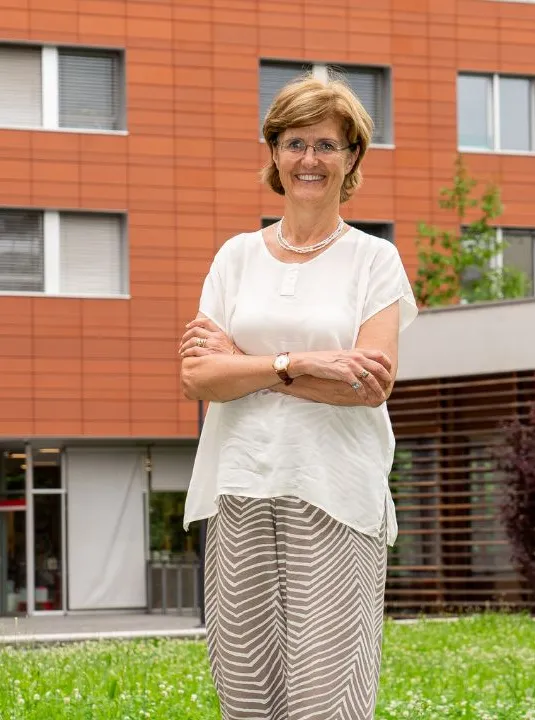
Art Beyond Art
Digital technologies are increasingly used in museums and exhibition spaces in an effort to update theri educational, dissemination and research functions according to contemporary forms.
If we focus on the visible part of the strategy, i.e. the development of an offer system addressing different types of public, a first question emerges about how to engage visitors. Traditionally, exhibits capture the viewer's attention through the display of works of art, the creation of contexts (think of dioramas in natural history museums), and forms of experimentation. The inclusion of increasingly refined digital solutions is making it possible to enrich the experience of visitors in multiple directions.
For example, you can imagine "how it really was" or understand "how it works inside", as is the case with the VR solutions in use at the Ancient Roman Domus of Palazzo Valentini in Rome, or show the results of chemical and radiological testing of the artifacts kept in an unconventional way (viz. the invisible archeology exhibition at the Egyptian Museum of Turin a few years ago).
Or you a multi-sensory visit experience can be activated, as in the Sleeping Beauties exhibit showcasing the most fragile dresses in the collection of the Metropolitan, where a hologram projected on a dress from 1887 in display gives the visual sensation of movement during a dance, while tubes hanging from the walls recreate the scents and odors that the fabrics released when they were in use.
It is possible to better contextualize eras, objects and relationships through web-based solutions that can be activated from smartphones, which partially replace audio guides and do not require the downloading of apps, such as the Mymuseum guides available at Palazzo Maffei in Verona or in Venice at Scuola Grande of San Rocco. Alternatively, objects and their genius loci can be reconstructed, and controversial historical heritages be given new semantics. The study of the original drawings and frescoes of Giulio Romano on the walls of Palazzo Te in Mantua made possible to reconstruct models of objects and create site-specific exhibitions which help capture the spirit of the times. At the same time, these are opportunities for in-depth research on archival materials and 3D printing techniques. The 1:1 high-resolution reproduction of Veronese's Wedding Feast at Cana located in Palazzo Cini in Venice restores meaning to the place; around this work, Peter Greenaway has created a multimedia performance. In Bozen-Bolzano, the neon installation highlighting the phrase by Hannah Arendt “No one has the right to obey” in the three languages of the province (Ladin, German, Italian) was cast over the bas-relief illustrating the history of fascism and portraying Mussolini on a horse. It directs the visitor's gaze towards a monument originally designed to celebrate the regime: it wasn’t destroyed, but now leaves nobody indifferent.
Furthermore, through new technologies it is possible to activate visitor participation and increase the possibilities of interaction with places, characters and contexts. Various gamification experiences, for example, such as those created for the MANN museum in Naples or for the Pomodoro Foundation in Milan, make it easier to attract even very young audiences to cultural displays. The first is in fact an audio guide that embraces the three areas of the museum collection and stimulates active research of the works through the "unlocking" of different contents in the course of the game. The second is configured as a team competition for schools supported by digital technology.
Finally, the lifecycle of the museum or exhibition experience can be lengthened and broadened, in an interplay of live and digital experiences. Two examples seem particularly interesting to me. On the one hand the digital apparatus connected to the Vermeer exhibition at the Rijksumeum of Amsterdam, and on the other the online escape room M4rt3! of the Museum of Science and Technology of Milan, a collaborative journey to discover Mars together with the life of astronomer Giovanni Schiaparelli, bringing together elements of the collections and the labs offered by the museum.
All the above are examples where technologies are used as a tool to better fulfill the cultural mission of art institutions, approach new audiences, increase the loyalty of existing ones, and collect data on behavior of the public that would otherwise be difficult and expensive to collect. These are fields of research and experimentation that involve specialized partners and activate very diversified skills. And the display solutions devised are the culmination of a process of rethinking museums started many years earlier. The quality of the digital offering of the Vermeer exhibition owes much to the high-resolution and open access digitization strategy of the museum; projects collaborations between museal institutions for the construction of interoperable archives not only stimulate collaborations between research institutions in data collection for research purposes, they also open up spaces for new artistic production having hitherto unthinkable levels of spectacularization, while the dematerialization of archives opens up spaces for collaboration between various types of cultural institutions and combinations of different artistic languages.
